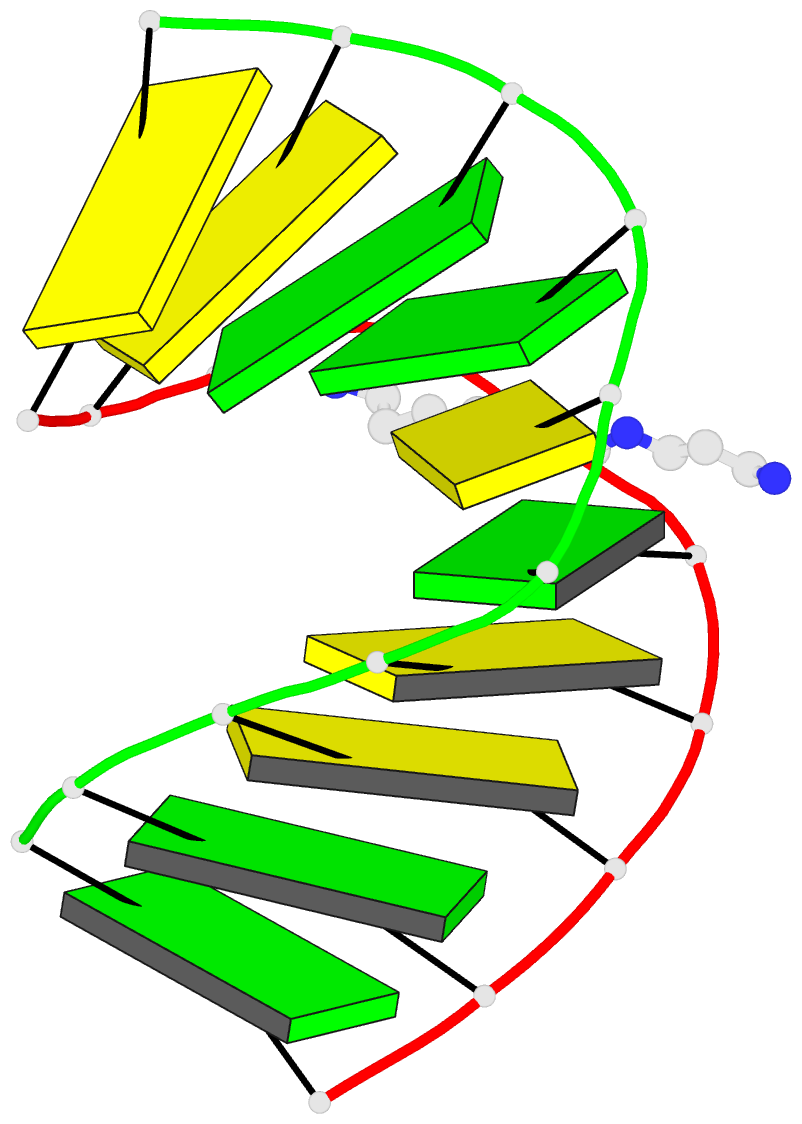Summary information and primary citation
- PDB-id
-
100d;
SNAP-derived features in text and
JSON formats
- Class
- DNA-RNA hybrid
- Method
- X-ray (1.9 Å)
- Summary
- Crystal structure of the highly distorted chimeric
decamer r(c)d(cggcgccg)r(g)-spermine complex-spermine
binding to phosphate only and minor groove tertiary
base-pairing
- Reference
-
Ban C, Ramakrishnan B, Sundaralingam M (1994): "Crystal
structure of the highly distorted chimeric decamer
r(C)d(CGGCGCCG)r(G).spermine complex--spermine binding to
phosphate only and minor groove tertiary
base-pairing." Nucleic Acids Res.,
22, 5466-5476. doi: 10.1093/nar/22.24.5466.
- Abstract
- The crystal structure of the self-complementary
chimeric decamer duplex r(C)d(CGGCGCCG)r(G), with RNA base
pairs at both termini, has been solved at 1.9 A resolution
by the molecular replacement method and refined to an R
value of 0.145 for 2,314 reflections. The C3'-endo sugar
puckers of the terminal riboses apparently drive the entire
chimeric duplex into an A-DNA conformation, in contrast to
the B-DNA conformation adopted by the all-deoxy decamer of
the same sequence. Five symmetry related duplexes
encapsulate a spermine molecule which interacts with ten
phosphate groups, both directly and through water molecules
to form multiple ionic and hydrogen bonding interactions.
The spermine interaction severely bends the duplexes by 31
degrees into the major groove at the fourth base pair
G(4).C(17), jolts it and slides the 'base plate' into the
minor groove. This base pair, together with the adjacent
base pair in the top half and the corresponding pseudo
two-fold related base pairs in the bottom half, form four
minor groove base-paired multiples with the terminal base
pairs of two neighboring duplexes.





